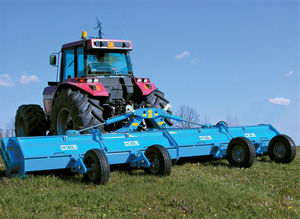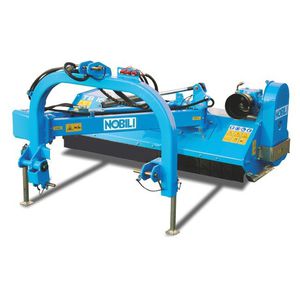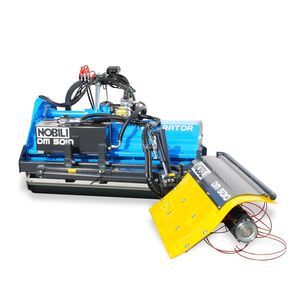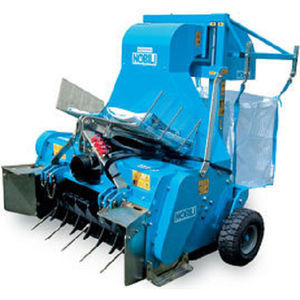
- Farm Infrastructure
- Waste management
- Rear-mount mulcher
- NOBILI SpA - Costr.Meccaniche per l'Agricoltura
Rear-mount mulcher BVL series 100knifehydraulic
Add to favorites
Compare this product
fo_shop_gate_exact_title
Characteristics
- Type
- rear-mount
- Technology
- knife
- Other characteristic
- hydraulic
- Cutting width
1,718 mm, 1,906 mm, 2,094 mm, 2,282 mm
(67.64 in, 75.04 in, 82.44 in, 89.84 in)- Rotational speed
Min.: 2,204 rpm
(13,848 rad.min-1)Max.: 2,354 rpm
(14,791 rad.min-1)- Tractor power
Min.: 60 ch
(60 hp)Max.: 110 ch
(110 hp)- Weight
700 kg, 765 kg, 840 kg, 920 kg
(1,543.24 lb, 1,686.54 lb, 1,851.88 lb, 2,028.25 lb)
Description
The mulchers BVL series 100 are built with high-resistance steel, standard equipped with heavy hammers with a new design and three counter-knives. Collecting rakes can be fitted as option to facilitate the shredding of pruning. The BVL range is suitable both for olive groves and orchard and is equipped with a headstock with both mechanical- and hydraulic adjustment ideal to achieve large lateral offsets. The smooth, low-rounded profile, without protrusions is ideal for shredding close to the trees easily. Equipped with an inlet opening that has been enlarged to enable a big volume of pruning to enter and to be shredded. The roller with removable ends is adjusted in two positions, forwards and backwards. The forward position allows a higher working speed, while the backward position allows a better shredding of pruning, with or without the collecting rakes.
Catalogs
No catalogs are available for this product.
See all of NOBILI SpA - Costr.Meccaniche per l'Agricoltura‘s catalogsOther NOBILI SpA - Costr.Meccaniche per l'Agricoltura products
Mulchers
Related Searches
- Mulching head
- Mounted mulching head
- PTO-driven mulcher
- Hydraulic mulching head
- Tractor mulcher
- Blade mulcher
- Vineyard mulcher
- Grass mulching head
- Orchard mulcher
- Offset mulcher
- Rear-mount mulcher
- 48 knives mulcher
- Roadside mulcher
- 40 knives mulching head
- 32 knives mulcher
- 24 knives mulcher
- 36 knives mulching head
- Row crop mulcher
- Front-mount mulcher
- Offset mulcher
*Prices are pre-tax. They exclude delivery charges and customs duties and do not include additional charges for installation or activation options. Prices are indicative only and may vary by country, with changes to the cost of raw materials and exchange rates.

























